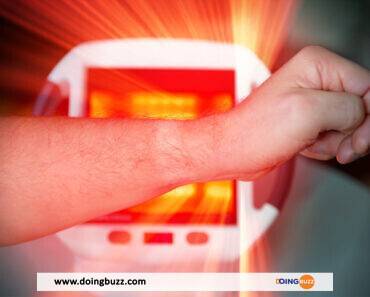Malignant mesothelioma (me-zoe-thee-lee-O-muh) is a type of cancer that occurs in the thin layer of tissue that covers the majority of your internal organs (mesothelium).
Mesothelioma is an aggressive and deadly form of cancer. Mesothelioma treatments are available, but for many people with mesothelioma, a cure isn’t possible.
Doctors divide mesothelioma into different types based on what part of the mesothelium is affected. Mesothelioma most often affects the tissue that surrounds the lungs (pleura). This type is called pleural mesothelioma. Other, rarer types of mesothelioma affect tissue in the abdomen (peritoneal mesothelioma), around the heart and around the testicles.
Symptoms
Signs and symptoms of mesothelioma vary depending on where the cancer occurs.
Pleural mesothelioma, which affects the tissue that surrounds the lungs, causes signs and symptoms that may include:
Chest pain
Painful coughing
Shortness of breath
Unusual lumps of tissue under the skin on your chest
Unexplained weight loss
Peritoneal mesothelioma, which occurs in tissue in the abdomen, causes signs and symptoms that may include:
Abdominal pain
Abdominal swelling
Nausea
Unexplained weight loss
Other forms of mesothelioma
Signs and symptoms of other types of mesothelioma are unclear, since these forms of the disease are very rare.
Pericardial mesothelioma, which affects tissue that surrounds the heart, can cause signs and symptoms such as breathing difficulty and chest pains.
Mesothelioma of tunica vaginalis, which affects tissue surrounding the testicles, may be first detected as swelling or a mass on a testicle.
When to see a doctor
See your doctor if you have signs and symptoms that worry you. Signs and symptoms of mesothelioma aren’t specific to this disease and, due to the rarity of mesothelioma, are more likely to be related to other conditions. If any persistent signs and symptoms seem unusual or bothersome, ask your doctor to evaluate them. Tell your doctor if you’ve been exposed to asbestos.
Causes
In general, cancer begins when a series of changes (mutations) happens in a cell’s DNA. The DNA contains the instructions that tell a cell what to do. The mutations tell the cell to grow and multiply out of control. The abnormal cells accumulate and form a tumor.
It isn’t clear what causes the initial genetic mutations that lead to mesothelioma, though researchers have identified factors that may increase the risk. It’s likely that cancers form because of an interaction between many factors, such as inherited conditions, your environment, your health conditions and your lifestyle choices.
Risk factors
Asbestos exposure: The primary risk factor for mesothelioma
Most mesotheliomas are thought to be related to asbestos exposure. Asbestos is a mineral that’s found naturally in the environment. Asbestos fibers are strong and resistant to heat, making them useful in a wide variety of applications, such as in insulation, brakes, shingles, flooring and many other products.
When asbestos is broken up, such as during the mining process or when removing asbestos insulation, dust may be created. If the dust is inhaled or swallowed, the asbestos fibers will settle in the lungs or in the stomach, where they can cause irritation that may lead to mesothelioma. Exactly how this happens isn’t understood. It can take 20 to 60 years or more for mesothelioma to develop after asbestos exposure.
Most people with asbestos exposure never develop mesothelioma. This indicates that other factors may be involved in determining whether someone gets mesothelioma. For instance, you could inherit a predisposition to cancer or some other condition could increase your risk.
Factors that may increase the risk of mesothelioma include:
Personal history of asbestos exposure. If you’ve been directly exposed to asbestos fibers at work or at home, your risk of mesothelioma is greatly increased.
Living with someone who works with asbestos. People who are exposed to asbestos may carry the fibers home on their skin and clothing. Exposure to these stray fibers over many years can put others in the home at risk of mesothelioma. People who work with high levels of asbestos can reduce the risk of bringing home asbestos fibers by showering and changing clothes before leaving work.
A family history of mesothelioma. If your parent, sibling or child has mesothelioma, you may have an increased risk of this disease.
Radiation therapy to the chest. If you had radiation therapy for cancer in your chest, you might have an increased risk of mesothelioma.
Complications
As pleural mesothelioma spreads in the chest, it puts pressure on the structures in that area. This can cause complications, such as:
Difficulty breathing
Chest pain
Difficulty swallowing
Pain caused by pressure on the nerves and spinal cord
Accumulation of fluid in the chest (pleural effusion), which can compress the lung nearby and make breathing difficult
Prevention
Reducing your exposure to asbestos may lower your risk of mesothelioma.
Find out whether you work with asbestos
Most people with mesothelioma were exposed to the asbestos fibers at work. Workers who may encounter asbestos fibers include:
Asbestos miners
Electricians
Plumbers
Pipefitters
Insulators
Shipyard workers
Demolition workers
Brake mechanics
Selected military personnel
Home remodelers
Ask your employer whether you have a risk of asbestos exposure on the job.
Follow your employer’s safety regulations
Follow all safety precautions in your workplace, such as wearing protective equipment. You may also be required to shower and change out of your work clothes before taking a lunch break or going home. Talk to your doctor about other precautions you can take to protect yourself from asbestos exposure.
Be safe around asbestos in your home
Older homes and buildings may contain asbestos. In many cases, it’s more dangerous to remove the asbestos than it is to leave it intact. Breaking up asbestos may cause fibers to become airborne, where they can be inhaled. Consult experts trained to detect asbestos in your home. These experts may test the air in your home to determine whether the asbestos is a risk to your health. Don’t attempt to remove asbestos from your home — hire a qualified expert.
Lancez-vous dans une nouvelle aventure avec DoingBuzz
Découvrez une multitude d'offres d'emploi et de bourses d'études adaptées à votre parcours.
Newsletter
Abonnez-vous et accédez à tous nos articles en premier !



















